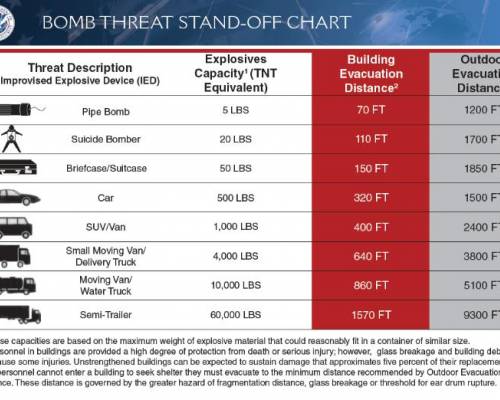How safe is your evacuation plan?
RPS brings you an insightful look at evacuating buildings in the USA. We can all learn lessons.
Students were evacuated from Hamden High School in the USA for around two hours after a bomb threat on Friday morning. Students were evacuated and brought to the Louis Astorino Ice Arena, behind the school, where they boarded buses as police searched the school
If your office, school, or workplace is being evacuated for security reasons, don't go to the evacuation point. Go anywhere else. Go home. If the threat to your respective organization is significant enough for them to initiate an evacuation...your day is over. If your building administrators believed it likely enough for the threat to be real, than there are likely bigger issues at play. Take the rest of the day off and let the officials investigate.
Schools and office buildings are a matrix of inter-connected and compartmentalized areas that offer their own protection in the form of dispersion and separation. Evacuation locations negate this protection by having everyone move from their respectively disjointed locations and instead come together at a single, pre-designated position.
If someone really wanted to do the most harm, the evacuation point would offer the most "bang for the buck" because almost all evacuation points are outside of the secure perimeter, rehearsed ad naseum, and as shown above, easily researched online. Just do a simple #firedrill social media search and you'll be able to find thousands of well-documented locations of mass assembly.
Building a bomb is not easy. It requires a lot of planning and privacy. Think about all of the steps required.
First, a person must believe that a targeted bomb attack not only offers the most effective resolution for their grievance, but that doing so offers the highest likelihood of success. They would then need to conduct research on the kind of bomb that will not only accommodate their needs, but who's construction also falls in-line with their own capable know-how.
Then comes the acquiring of materials required to construct such an explosive device, followed by a need to find a "work station" that would allow for them to privately assemble all of the components. Assuming they are not a professional bomb-maker, they would then need to "test" their explosive device to make sure it will work as planned, and then make the requisite adjustments for "the real thing." Now comes the most critical component of their pathway to violence.
They still need to conduct research on their target, breach whatever security features are in place, emplace the device, and then somehow get away undetected.
All of this is an incredibly arduous endeavor. There are literally thousands of chances for the bomber to fail, but only one chance for them to succeed. So, why would they go through all of this activity only to sabotage their success with a phone call?
In short, they wouldn't.
As a general rule, those who threaten, don't bomb, and those who bomb, don't threaten.
Unless of course, the threat itself is part of the plan.
Be smart. Be aware. Stay Alive. RPS would agree with this and endorse what is written here.
With thanks to Spencer Coursen who is the President of Coursen Security Group, a consulting firm specializing in the prevention, planning, and response to the concerns of personal and physical safety. Mr. Coursen is a subject matter expert in threat assessment, protective intelligence, and vulnerability reduction. His web pate is at: www.CoursenSecurityGroup.com
The original article is at this link: https://www.linkedin.com/pulse/bomb-threats-how-safe-your-evacuation-plan-spencer-coursen?goback=%2Emid_I5979626720033067009*4500_*1_*1_*1&trk=prof-post



